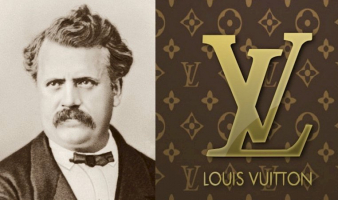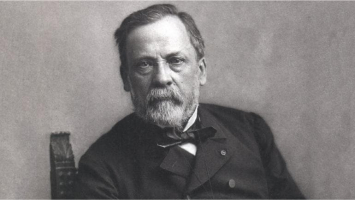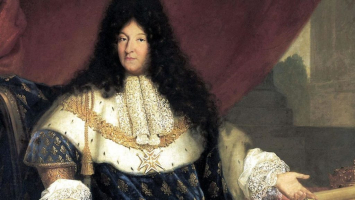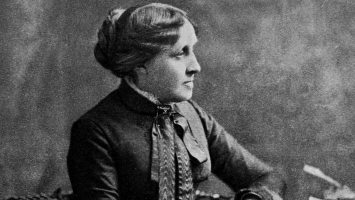Top 10 Interesting Facts about Louis Braille
Famous educator Louis Braille is credited with developing Braille. The blind employ a method like this. Braille coding enables blind people to read and write ... read more...despite their lack of eyesight. Today, it is still in use all around the world. He spent the majority of his life developing and practicing the technique and teaching people in France and subsequently the rest of the world about it. Even so, quite a few people are aware of a lot of details regarding his life. Hope that reading this essay will improve your general knowledge as well as your understanding of Louis Braille and his contributions to the world. Let’s check the 10 most interesting facts about Louis Braille below!
-
One of the most interesting facts about Louis Braille is He was not blind from birth. Louis Braille, then 3 years old, enjoyed playing at his father's harness store, which was located next to the family's home, in the French village of Coupvray in 1812. One of the top harness makers in the region was his father. For the horses owned by the locals, Mr. Braille also fashioned reins, saddles, and collars. He used sharp instruments to cut the leather into strips and puncture it. Louis had been told not to play with the shop's tools since he was still too young.
On that particular day, Mr. Braille went outside the store to assist a customer. Like his father, Louis considered trying to make a hole in a piece of leather. He attempted to force the object through the leather by grabbing it. He lacked his father's physical toughness. Again, he gave it his best effort. He lost control of the tool, sending it flying up and into his left eye. Louis cried out in agony. To assist him, his parents, two sisters, and brother ran.
They covered his eye with a handkerchief. In Coupvray, there was no hospital. The nearest physician was a long way away. They brought Louis to a villager who utilized herbal remedies to heal wounds and illnesses. She applied a wet herbal solution to a cloth bandage before applying it to Louis' eye. But the infection from his injured eye spread to his other eye. Two years later, when he was five years old, he was blind in both eyes.
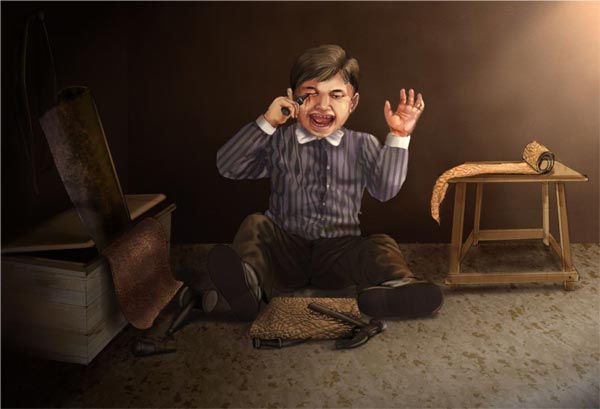
Photo: http://simplyknowledge.com/ 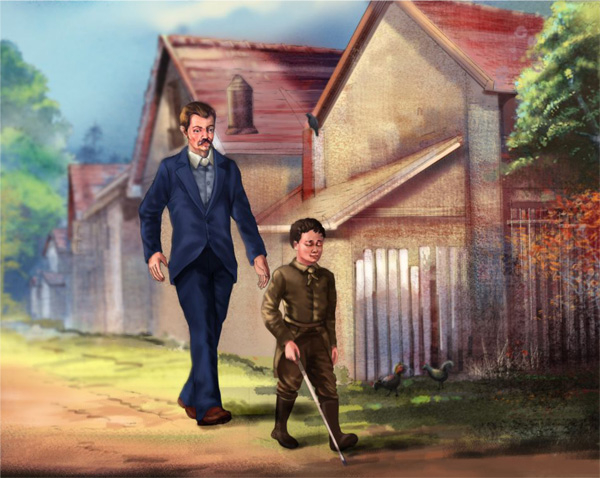
Photo: http://simplyknowledge.com/ -
Sadly, being blind in the 1800s was considered weak, and many blind individuals ended up begging to survive. Frequently, only individuals who were born into very wealthy households could afford to go to school. Despite Louis' Dad's thriving leather business, the family wasn't very wealthy because he also had to support three other kids.
The father of Louis Braille made enough money to feed his four children, but he was unable to pay for his blind son's expensive schooling. One of the noblewomen learned about the Little Louis story and was moved by it. She was able to enroll him at the Royal Institute for the Blind, the first institution of its kind. Louis traveled to Paris when he was ten years old to begin his study at the Royal Institute.
He and the other students learned to read by using their fingers to trace raised print letters. Few students were able to successfully learn this talent because it was challenging. Students had to learn the shapes of the letters to write. The next step was to attempt to reproduce them on paper. Of course, it will be quite difficult if you are blind.
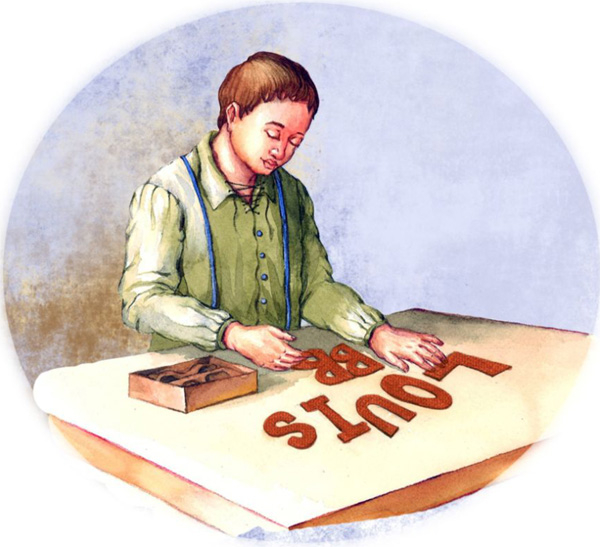
Photo: http://simplyknowledge.com/ 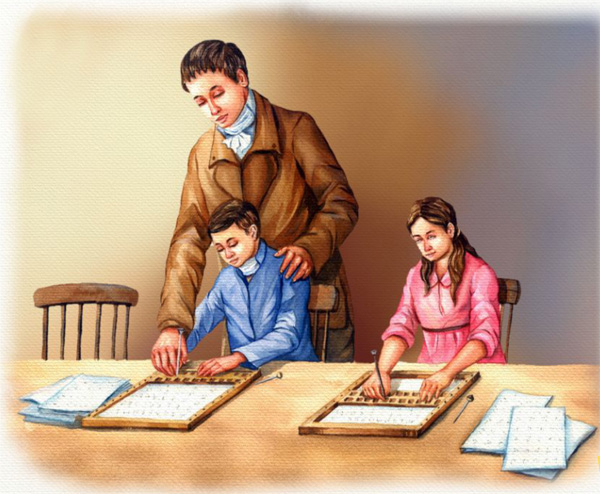
Photo: http://simplyknowledge.com/ -
The Royal Institute for the Blind may have been a first in the world, but the structure was a run-down, dingy old jail. But it appears that not only the structure but also the rules were taken from the previous jail. Only once a month was allotted for students at the Royal Institute for Blinds to take a bath. They received severe punishment and scant nourishment. A fairly large set of regulations has to be followed. Despite all of these challenging circumstances, Braille and other blind children were able to live and learn there.
Louis's experience at school wasn't all negative, though, as he was able to learn a variety of new disciplines (such as grammar, music, and science) and get the books he had been longing for.
Even reading was taught to him by tracing elevated letters in books produced specifically for him. The books, however, were a bit disappointing because the font was so large and each line took up an entire page, making the narrative extremely brief. Louis also wanted to write because reading wasn't enough for him. He consequently acquired an alphabet made from chunks of heavy leather. He started writing by tracing these leather letters in ink, which was a tedious and time-consuming technique.
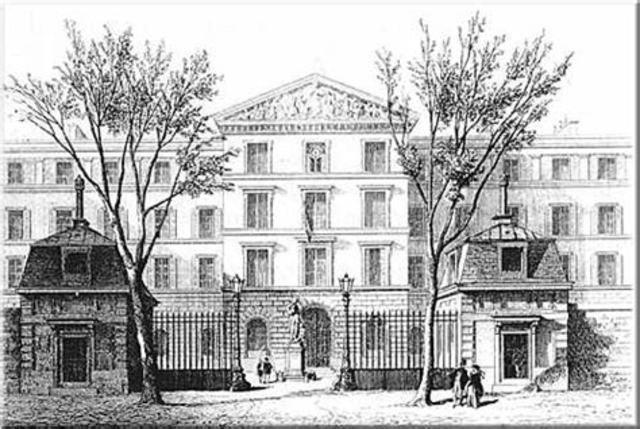
Photo: https://www.timetoast.com/ 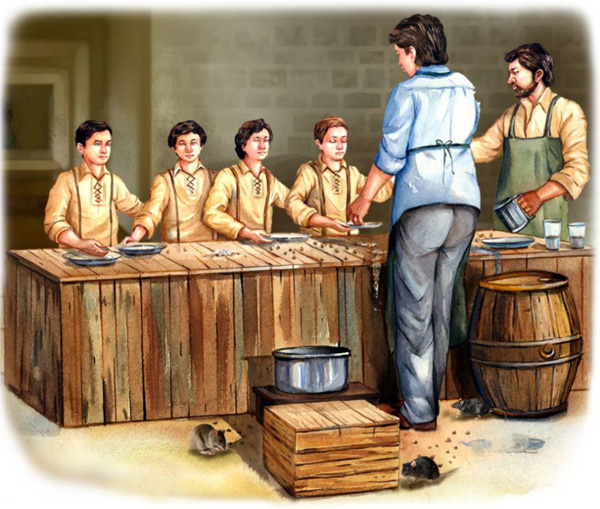
Photo: http://simplyknowledge.com/ -
He received his instruction from French Army Captain Charles Barbier at the Royal Institution for Blind Youth. He discussed his "night writing," which was a form of silent combat communication used by soldiers. This system was extremely complex and was made up of dots and dashes. However, it encouraged Louis Braille to develop a new kind of speech. He had streamlined "night writing" by the time he was 15 years old. This involved reducing 12 dots to 6 dots.
He labored tirelessly on his Braille system for two years before completing it in 1824. He removed unnecessary details from what he had seen from Captain Charles Barbier and substituted dots for the embossed letters. He had devoted all of his spare time to locating this quick-and-easy system. To try it out, Louis used a stylus and a wooden writing board with paper. The hands must be moved from left to right along each line to read Braille.
When he was finished, Louis Braille took his apparatus to the Royal Institution for Blind Youth's director. Louis had to jot down what the director said as he read from a newspaper. He wrote on a wooden writing board with paper while using a stylus. With the raised dots he had made, he was able to read back all of the words to the director. The director found this to be impressive.
An intriguing aspect about Louis Braille is that he went on to modify his approach to music and mathematics. In 1829, he released the first book on Braille. "Method of Writing Words, Music, and Plain Songs utilizing Dots, for Use by the Blind and Arranged for Them" was the name of the procedure.
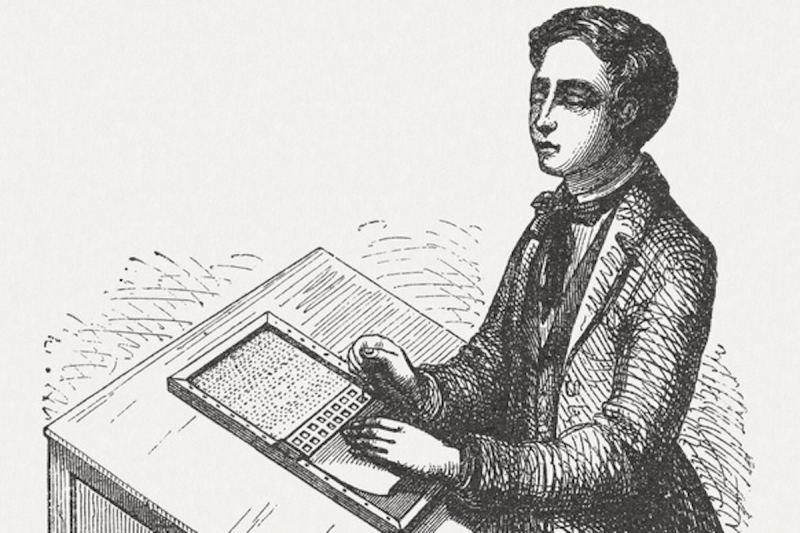
Photo: https://www.thestatesman.com/ 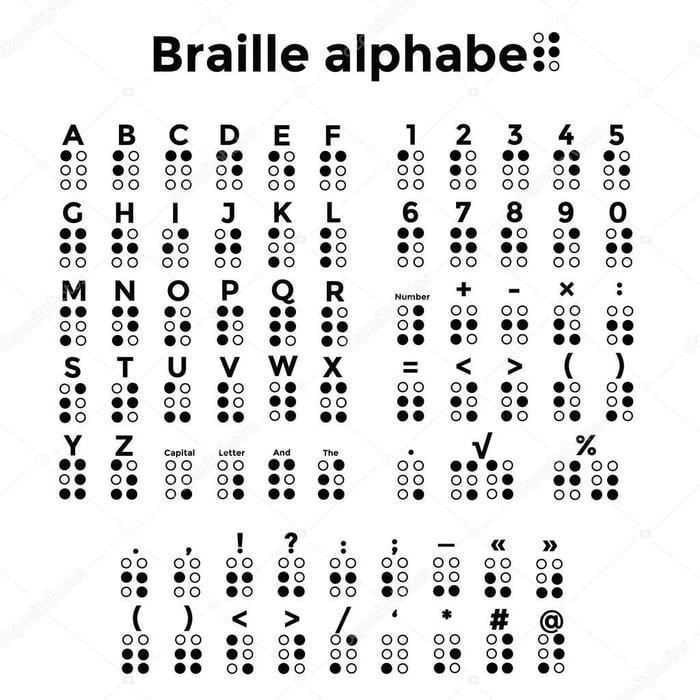
Photo: https://www.pinterest.com/ -
Louis Braille was asked to return as a teacher's assistant once the course was finished. By 1833, he had received a full chair. Indeed, because of his academic standing, he was hired as a lecturer at the Royal Institution for Blind Youth, where his lessons were well-received by the students. He was an algebra, geometry, and history teacher. He benefited much from the new script Louis Braille created, and it also helped him gain the respect of his teachers. However, his script was not formally approved. The Royal Institute for Blinds' teachers believed that Louis' screenplay would make the blinds so independent that they would no longer want their guidance, even though the school's director adored and respected him. As a result, they never introduced Louis Braille's system to the students.
Louis sadly passed away at the young age of 43 after a protracted battle with a respiratory condition (believed to be tuberculosis). His linguistic system was finally approved by the Royal Institute for the Blind just two years later, in 1854, thanks to fervent student demand.
From there, braille spread throughout the rest of the world. In 1878, the World Congress for the Blind decided to establish braille as the standard for the blind on a global scale. Now, practically all languages in the world have adopted Braille.
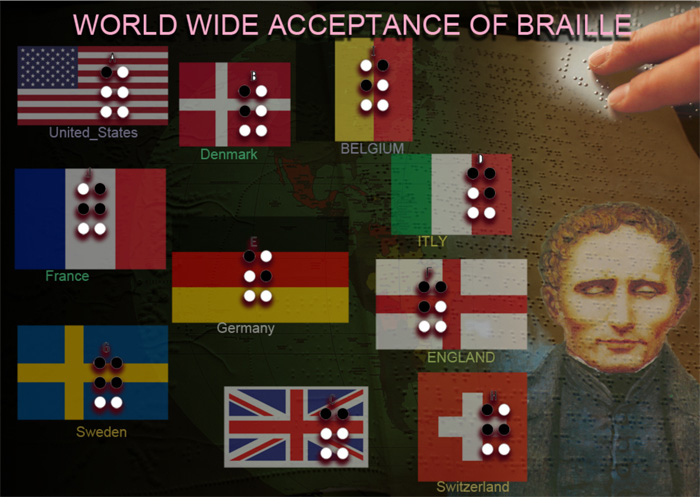
Photo: http://simplyknowledge.com/ 
Photo: http://simplyknowledge.com/ -
In 1834, Louis Braille decided to bring his code to the Exhibition of Industry, which is one of the most interesting facts about Louis Braille. All inventions should be shown here for the whole public to see. He practiced his alphabet by taking notes during conversations. Then, he was able to read them back. The French king observed Louis' innovation when he was at the exhibition, but he decided against making it the official language for the blind. The dot alphabet books weren't going to cost the monarch any money, either.
Louis was disappointed that his innovation wouldn't be made available to other blind people when he got home from the Paris Industrial Exhibition. He had had intermittent fatigue during the past few years. He occasionally also experienced a fever and a nasty cough. He got worse. His physician diagnosed him with consumption, or what is now known as tuberculosis. Rest and fresh air were the only treatments available at the time for this illness.
Louis gave fewer lectures and spent more time outside. He kept enhancing the dot alphabet. He added the letter "w" so that English could be written using his code. He also toiled at producing math books for blind students.
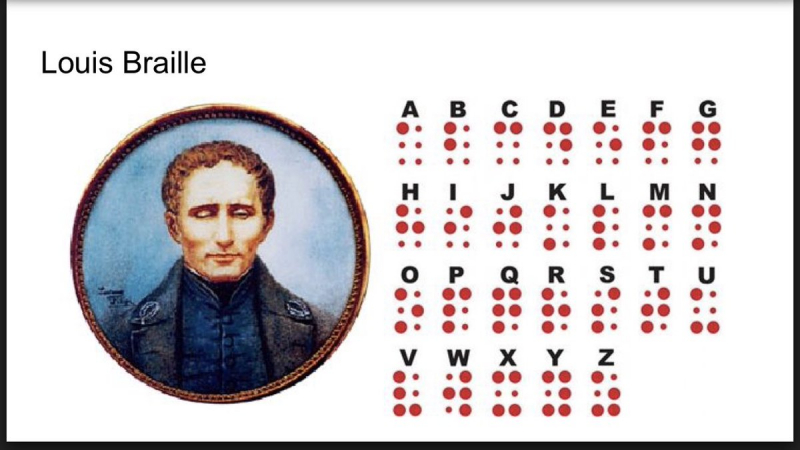
Photo: https://onemouseproductions.com/ 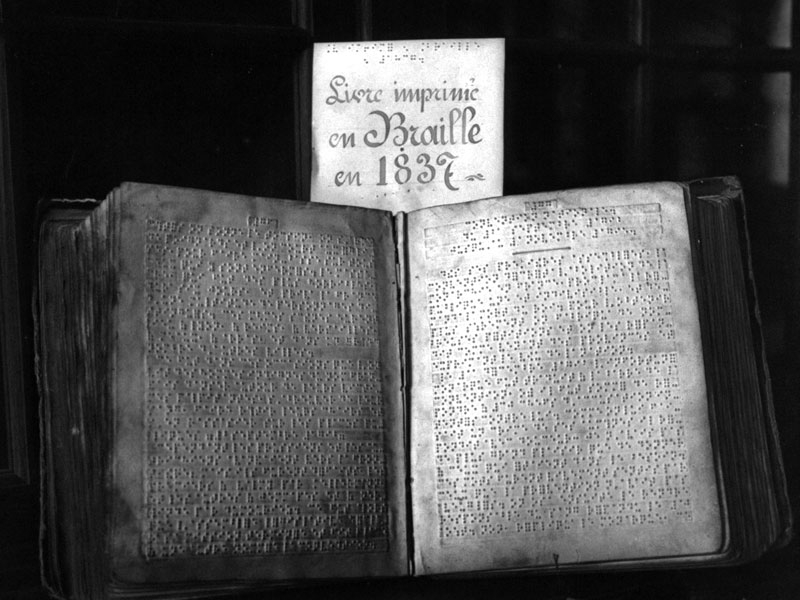
Photo: https://www.europeana.eu/ -
From the beginning of his studies at the Institute (the Institut Royales des Jeunes Aveugles), Braille excelled in music, taking home the top medal for solo cello in his fifth year. At that point, Braille's standing as a musician had already been cemented. He performed in several Parisian parishes, notably Notre-Dame-des-Champs and Saint-Nicolas-des-Champs, which possessed a beautiful old organ. He made spare change tuning pianos in and around Coupvray over the summer. When one of his exceptionally gifted students was going to depart the Institute without a job in 1839, Louis extended to him an offer of his position at Saint-Nicolas-des-Champs.
Even Braille's pupils had urged him to figure out how to make his simple raised-dot method work with music. The 18th-century composer Jean-Jacques Rousseau (1712–1778)'s technique, which the Institute had accepted to replace Haüy's system, served as the foundation for his first music code. Rousseau's music, however, had two very significant flaws: it depended on embossed print, and it was unable to convey the relative values of musical notes.
Rousseau's method was first enhanced by Braille by substituting his own six-dot Braille code for the difficult-to-read embossed print. Unexpectedly, Braille's straightforward cell handled every facet of music.
He created the fundamental musical code in 1834, from which blind musicians today have developed a complex system. His musical notation technique was so excellent that it was adopted almost immediately, in contrast to Braille's literary code, which took decades to achieve recognition. It is hard to speak of Braille's code in terms of music with too much adulation, a music instructor at the Missouri Institution for the Education of the Blind claimed in 1866.
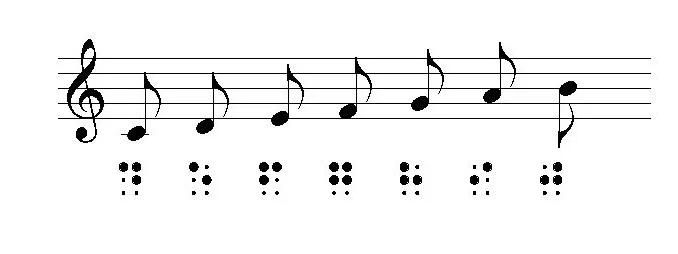
Photo: https://www.cutcommonmag.com/ 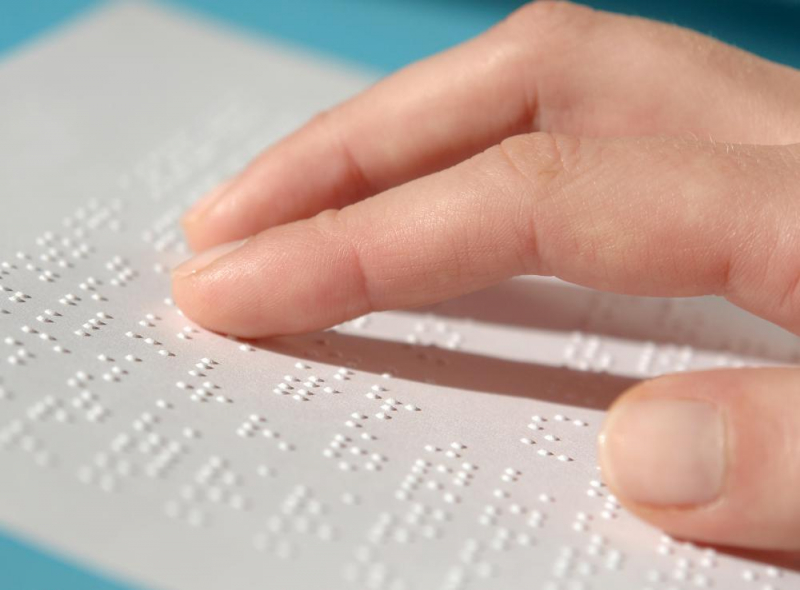
Photo: https://www.wise-geek.com/ -
Louis Braille's remains were exhumed in Coupvray on June 20th, 1952, and transported to Paris where they were respectfully placed at the Panthéon. However, Braille's hand bones were kept apart and in a concrete box that was placed on top of his vacant tomb in Coupvray. President of the Republic Vincent Auriol, as well as delegates from more than twenty nations and blind persons, all attended the ceremony in Paris. Braille had told Foucault in 1841 that for blind people, communication was crucial "if we are not to go on being ridiculed or patronized by condescending sighted people. We don't need sympathy, and we don't need to be reminded of our frailty. Communication is the key to achieving our goal of being treated equally.”
All the church bells in Paris were ringing on the day of his reburial as the casket was brought through the streets. Jules Vincent Auriol, the president of France, marched behind Helen Keller's coffin alongside her, followed by endless rows of blind people tapping their white canes in gratitude to Louis Braille. Since then, he has received several tributes from all around the world, including the use of his picture on a $1 coin in the United States and a $5 coin in the Pacific island nation of Palau.
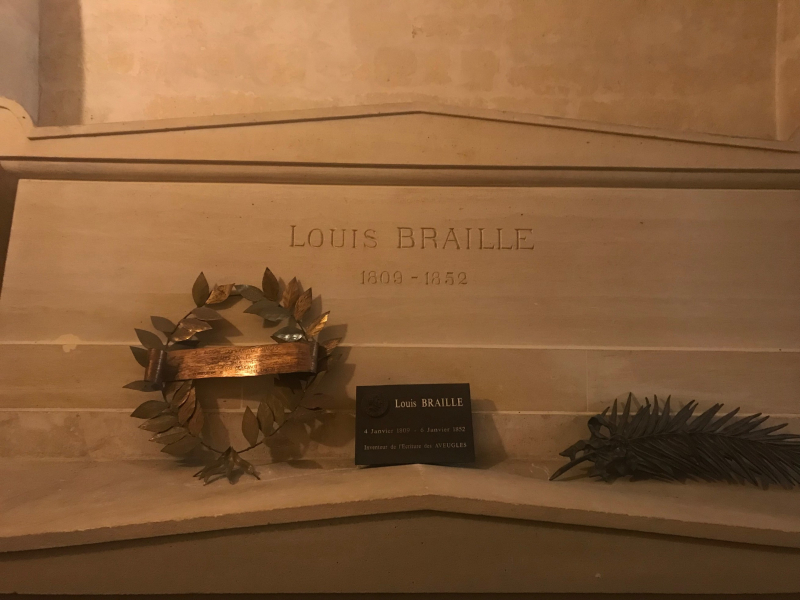
Photo: http://himetop.wikidot.com/ 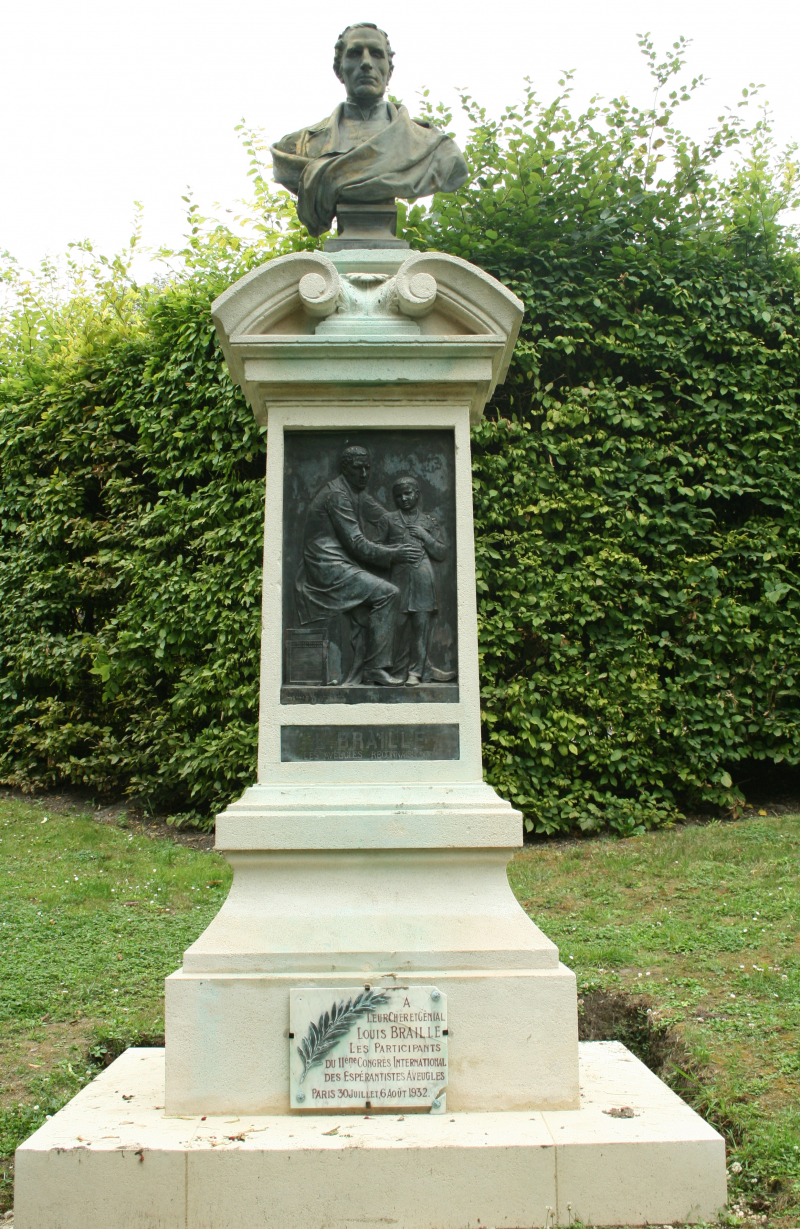
Photo: https://commons.wikimedia.org/ -
In 1999, a NASA-discovered asteroid originally known as 1992 KD and renamed in honor of Louis Braille. As suggested by Kerry Babcock, an engineer at Kennedy Space Center, the asteroid is known as 9969Braille. After the NASA probe Deep Space 1 flew by the asteroid, the name was changed. The orbit of the asteroid 9969 Braille is significantly inclined relative to the ecliptic plane of the planets and rotates just once every nine days.
At the Kennedy Space Center, Mr. Babcock works as a software engineer. He started learning how to write in braille a few years ago and was astonished by Louis Braille's accomplishment. In a sense, the spacecraft that is currently circling the sun is also named "Braille," the daughter that Mr. Babcock gave the name.
The winning entry was made by Kerry Babcock of Port Orange, Florida. His reference reads: "Louis Braille invented the Braille language so those who could not see could obtain knowledge and explore through the 'written' word. Likewise, asteroid Braille provides knowledge about our universe and its origin to the people of Earth, who through Deep Space 1, are also able to explore and discover what previously they could not see.'"
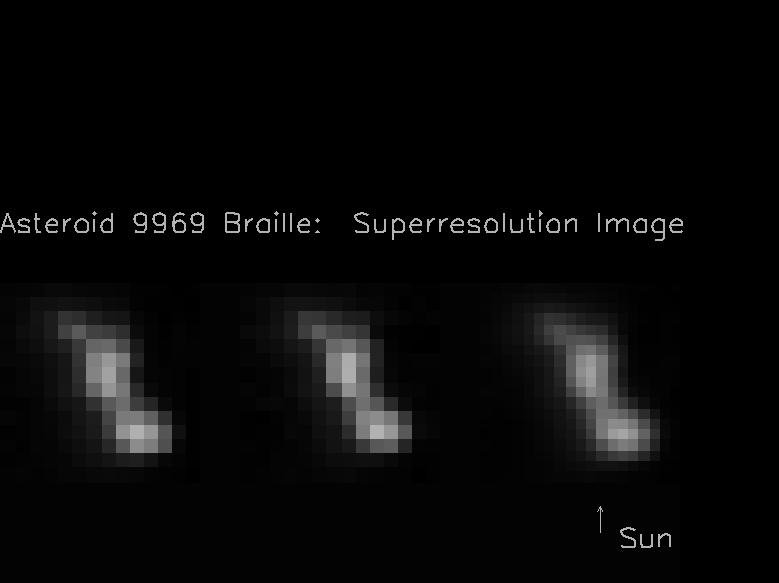
Photo: https://vi.wikipedia.org/ 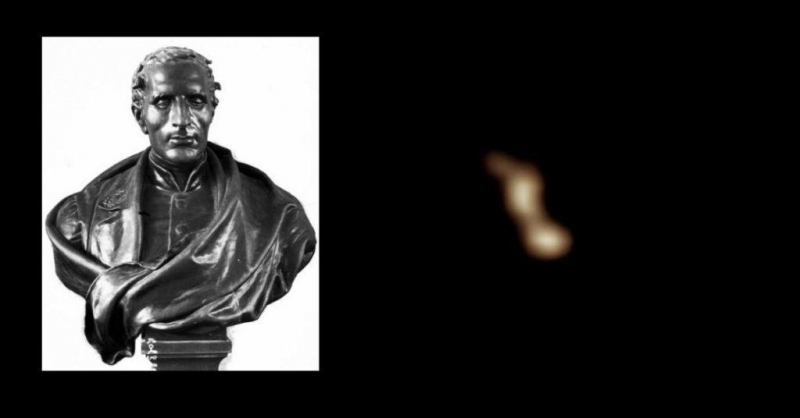
Photo: https://www.flipscience.ph/ -
The birthplace of Louis Braille has been transformed into a museum honoring his life and contributions. This is known as one of the most interesting facts about Louis Braille. The home is recognized as a historic structure. “In this house on January 4, 1809, was born Louise Braille inventor of writing in raised dots for use of the blind. He opened the doors of knowledge to those who cannot see” - a marble tablet fixed to the outer wall of the house reads.
His modest home's construction and the furnishings within are typical of the XVII and XVIII centuries. The tour allows guests to see the main room where the Braille family resided, the father's workshop where the fatal accident occurred, and Louis Braille's bedroom. The bedroom also traces the development of language and the many writing devices that were used.
The museum provides fascinating insights into blindness and what life is like for persons without eyesight in addition to learning about Louis Braille's life and the culture he lived in. You can learn the fundamentals of braille reading and write with the aid of an enthusiastic teacher. The museum also offers entertaining food tasting classes in the dark that are created to appeal to various senses. The Louis Braille museum offers a special family outing centered on a remarkable man who transformed the lives of many others.
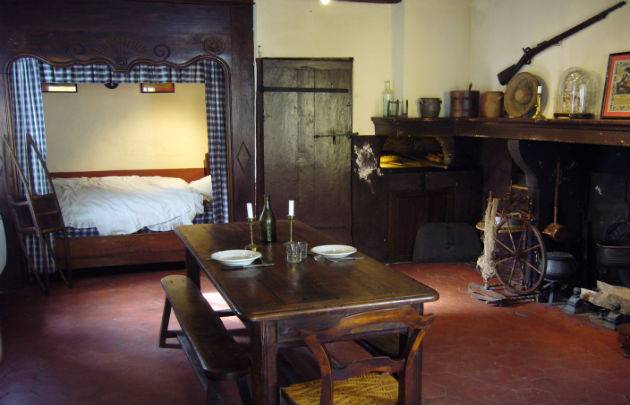
Photo: https://en.parisinfo.com/ 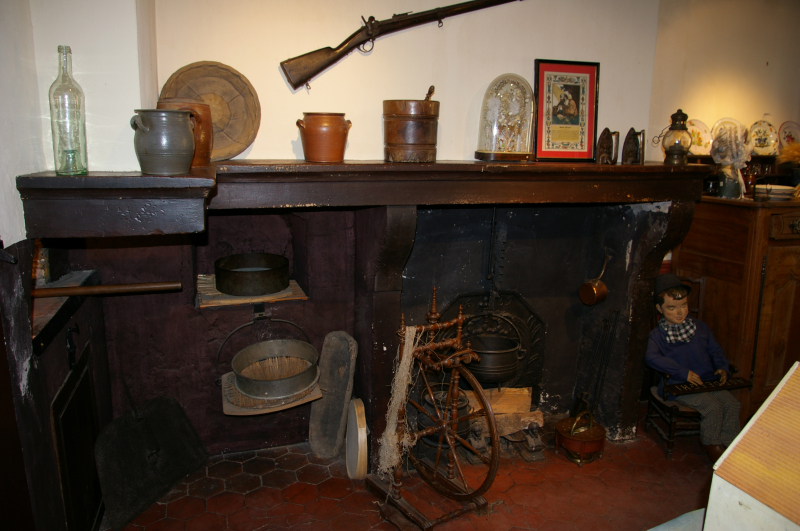
Photo: https://commons.wikimedia.org/













